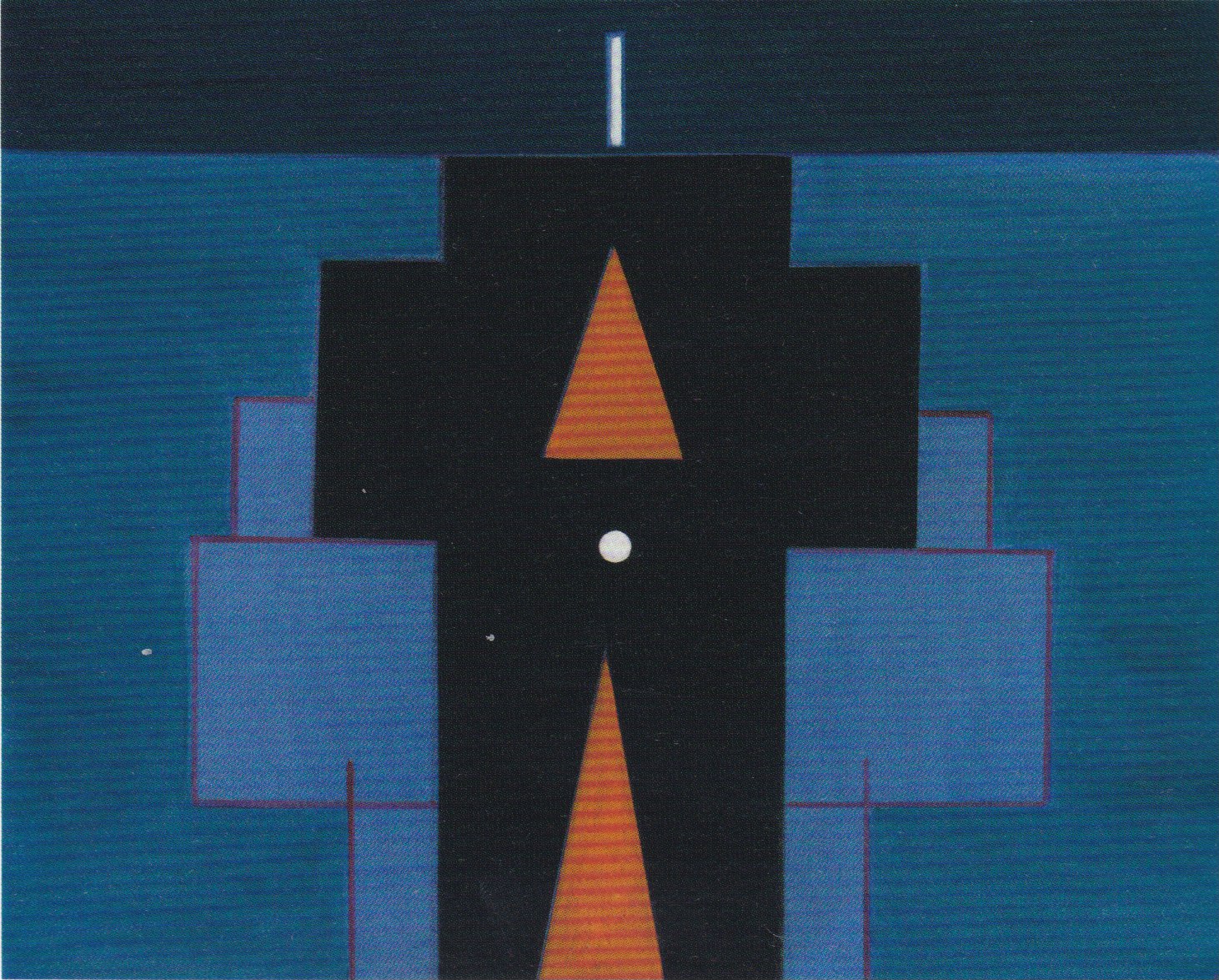Tong Fang Painting Association & Fifth Moon Group
三大現代畫會

「東方画会」「五月画会」「中國現代版画会」
<英語> https://simple.m.wikipedia.org/wiki/Ton_Fan_Group
<ドイツ語> https://de.m.wikipedia.org/wiki/Ton_Fan
<スペイン語> https://es.m.wikipedia.org/wiki/Ton_Fan_Group
<フランス語> https://fr.m.wikipedia.org/wiki/Ton_Fan_Group
【Japanese】
(台湾における)三大現代芸術団体「東方画会」「五月画会」「中國現代版画会」があります。
「五月画会」
台湾芸術の歴史上において重要な芸術団体の一つです。メンバーは主に師範大学 芸術学部の学生から構成されています。
前衛芸術的スタイルは、それまでの古典的で保守的な台湾芸術を現代アートへと変革させ、台湾芸術の近代化に強い刺激と影響をもたらしました。。
それに伴い、五月畫會は毎年の5月に定期展覧会を開催し、(最初の展覧会は台北の中山ホールで開催)
1960年代になると大胆なスタイル、自由なテーマ、概念や独自の絵画手法を取り入れた、台湾を代表する前衛的グループとなっていきました。当時、他に匹敵する団体として「東方畫會」があります。
1960年代以降、「五月畫會」のメンバーの多くが海外に留学、移住することとなり、団体展が個展へと変わっていきました。1974年以降、活動は徐々に減少。
「東方画会」
「東方畫會」は、第二次世界大戦後の台湾芸術史における重要な現代美術団体です。
李仲生のスタジオの学生によって開始され、創立メンバーに李元佳(1994年英国にて逝去)歐陽文苑、吳昊(本名:吳世祿)、夏陽(本名:夏祖湘)、 霍剛(本名:霍學剛)、陳道明、蕭勤、蕭明賢(本名:蕭龍)、そして先生に李仲生がいました。 その後、李錫奇、朱為白らが加わります。
「東方画会」の考え方
現代絵画の表現に固執する。 次に、自分たち自身のオリジナルのスタイルを持つこと。第三に、世界の絵画シーンの中で東洋文化が持つ特徴を持つ必要性があるこ と。東洋文化の特徴を用いて、しかも世界の絵画シーンに溶け込めること。こうした「東方畫會」の明確なメッセージと行動が、戦後の台湾で初となる主張の強い芸術活動となった。
「中国近代版画協会」
1958年、秦松、李錫奇、江漢東、楊英風、陳庭詩と施驊らによりが “中国近代版画協会”が結成されました。 彼らは、古典的なリアリズムを打破し、ほぼ一世紀に渡り失われた中国の版画芸術を呼び戻しました。 内容については、それまでの宗教、民俗的習慣などの過去のスタイルから脱却し、反日戦争の時代、「木版画は”政治的プロパガン ダ”」と禁止されている風潮より解放されました。 技法として、伝統的な木版に加えて、絹版、石版、銅版など様々なバージョンがあり、腐食などを加えることにより彫刻された作品は予測できない面白さがあります。
【English】
There are three major contemporary art organisations in Taiwan: “Ton Fan Group”, “Fifth Moon Troupe” and “China’s Contemporary Print Association“.
“Fifth Moon Troupe“
It’s one of the important art associations in Taiwans history of art. The members were mainly composed of students of the National Taiwan Normal Univerity’s faculty of arts.
Their avant-garde like artistic style transformed the until then classical and conservative Taiwanese art into contemporary art and served as a strong stimulus and influence for the modernization of Taiwanese art.
In addition, they regularly held art exhibitions every year in May (the first exhibition was held at the Taipei Zhongshan Hall).
During the 1960s they became Taiwans leading avant-garde group, introducing bold styles, liberating themes, concepts and unique painting techniques. At the same time there was another, comparable organization, the “Ton Fan Group“.
Since the 1960s many “Fifth Moon Troupe“ members moved to study abroad, so the group exhibition was turned into a solo exhibition. After 1974 their activities gradualy declined.
“Ton Fan Group“
The „Ton Fan Group“ is a contemporary art group, that plays an important part in Taiwan’s art history after Wolrd War II.
Initiated by students of Li Chun-Shan’s studio, the founding members include: Li Yuan-chia (died 1994 in the UK), Oyan Wen-Yuen, Wu Hao (real name:), Hsia Yan (real name:Xia Zuxiang ou Xia Yang), Ho Kan (real name: Huo Hsueh-Kang), Cheng Tao Ming, Hsiao Chin, Hsiao Ming-Hsien (real name: Xiao Mingxian ou Xiao Long) and their teacher. Afterwards Lee Shi Chi and Chu Wei-Bor joined as well.
“Ton Fan Group“ way of thinking
They are sticking to the expression of Modern Painting. Second, they all have their own original style. Third, they see it as necessary to stick to the characteristics of oriental culture among the international art scene. Use the characteristics of oriental culture and blend it into the international art scene. These distinct messages and actions of the “Ton Fan Group“ became the first assertive artistic activities of post-war Taiwan.
“China’s Contemporary Print Association“
In 1958 “China’s Contemporary Print Association“ was formed by Qin Song, Lee Shi Chi, Chiang Han-Tong, Yu Yu Yang and Chen Ting-Shih. They left behind classic realism and revived Chinese print art, which had been lost for almost a century. In terms of content, they broke away from the past styles of religion and folk customs and liberated themselves from the ban of “woodcut is ‘political propaganda’“ during the anti-Japan war times. As for techniques, in additition to woodcut they used various versions of silk print, lithography and copperplate engraving; the added corrosion on the sculptured work is unpredictabe fun.
【Chinese】
三大現代畫會
「東方畫會」與「五月畫會」及「中國現代版畫會」。
「五月畫會」
是臺灣藝術史上重要的畫會之一。由師大藝術系學生所組成。以前衛之姿引領藝術潮流,影響了臺灣藝術從古典的靜物保守風格轉為現代藝術風格。對台灣畫壇邁入現代化深具刺激與影響力。
五月畫會的創辦人有劉國松、郭豫倫、郭東榮、李芳枝等人,1957年5月之後加入顧福生、 黃顯輝、莊喆、馬浩、李元亨、謝裡法、韓湘甯、胡奇中、馮鐘睿、陳景容、鄭瓊娟、 廖繼香、孫多慈、楊英風、陳庭詩等畫家。
並開始固定在每年五月舉辦畫展(第一次展出是在臺北的中山堂),在1960年代, 以大膽的畫風、主張自由的繪畫題材、概念、繪畫方式等成為臺灣現代繪畫的前衛團體, 當時僅有另一個組織“東方畫會”能與之比擬。
1960年代後,五月畫會的成員大多出國留學、旅居海外、原先團體展出的方式, 逐漸變為成員的個展,1974年後,畫會活動漸少。
「東方畫會」
東方畫會為第二次大戰後臺灣美術史上重要現代美術團體。由李仲生畫室學生發起, 成立創始會員有:李元佳(1994年病逝英國)、歐陽文苑、吳昊(本名吳世祿)、 夏陽(本名夏祖湘)、霍剛(本名霍學剛)、陳道明、蕭勤、蕭明賢(本名蕭龍), 師承李仲生。後期加入李錫奇、朱為白等人。
東方畫會主張:
堅持在繪畫上作現代的表現。二、要有個人獨創的風格。 三、要能發揮東方文化特色, 並融入世界繪畫潮流中。 明確的言論與行動, 成為戰後臺第一個具有鮮明主張的美術運動。
「中國現代版畫會」
1958年秦松、李錫奇、江漢東、楊英風、陳庭詩、施驊一起組成「中國現代版畫會」。 他們打破以往古典寫實作風與插畫的方式,企圖將迷失幾近一個世紀的中國版畫藝術 再度找回來。在內容上,拋卻了過去自宗教、民俗方面取材的寫實風格;在性格上, 從對日抗戰時期,木刻版畫成為「政治宣傳品」之禁錮中解放出來;而在技法上, 則除了運用傳統的木刻(凸版)手法之外,更有絹版、石版、銅版、鋅版等各類版種, 加以腐蝕或刻製,製作出的效果令人意想不到的不可預期性。